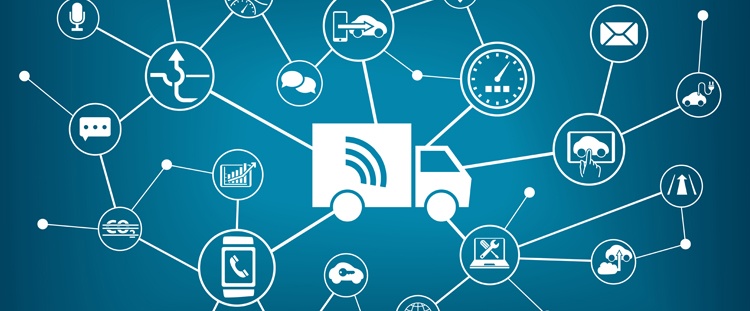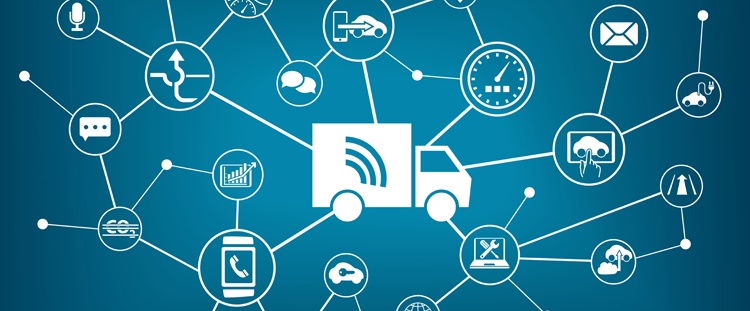
A ground-breaking change. That’s how the logistics industry worldwide is foreseeing the incoming of the autonomous vehicles technology in warehousing, logistics and supply chain management, and last-mile deliveries, among other crucial areas of this business.
What started a couple of years ago, when Amazon announced their delivery by drones, has rapidly moved onto self-driving trucks (like Mercedes), and cars (such as Google’s), and -most recently- Uber’s acquisition of Otto’s self-driving truck startup, which will be a pillar of Uber’s autonomous division, a business area that aims to be one of the main engines of Uber’s growth. In fact, this company has opened an Advanced Technologies Center in Pittsburgh, where robotic experts are working to lead the autonomous driving technology market.
Now, these kinds of solution has been conceived to reduce accident rates, and help truck drivers instead of replacing them. According to Bloomberg:
“Otto has developed a kit that allows big-rig trucks to steer themselves on highways, in theory freeing up the driver to nap in the back of the cabin. The system is being tested on highways around San Francisco. Aspects of the technology will be incorporated into Uber’s robot livery cabs and will be used to start an Uber-like service for long-haul trucking in the U.S., building on the intracity delivery services, like Uber Eats, that the company already offers.”
The startup’s objective isn’t to build self-driving vehicles, but to create self-driving kits that can be implemented in current trucks.
Nevertheless, “it’s not clear if Uber plans to compete with package delivery firms like UPS and FedEx, but it’s easy to see how that sort of program could complement the company’s other offerings,” Supply Chain 24/7 says.
New Challenges for The Logistics Industry
Crowdsourced business and autonomous driving technology are joining forces to deliver new solutions for more demanding customers. In regards to this, Supply Chain 24/7 states that “the millennial generation is much less loyal to legacy brands than generations past, and data shows consumers are hungrier for better, faster and more transparent shipping and delivery services, and they don’t much care who provides it.”
In addition, this logistics and supply chain specialized source explains that technology has brought logistic giants FedEx and UPS face-to-face with their own competitive threat: Amazon.com, Google, Uber, Postmates, and other startups.
“Mobility, brought upon by the proliferation of smartphones, apps and connected devices, has created a climate of instant gratification and given way to a fast-growing market for on-demand delivery services, such as Postmates.”
In fact, a 2015 US consumer study developed by Acquity Group showed that:
- 75% of consumers would receive deliveries from third party logistics, rather than ordering their products directly from a retailer.
- 64% of consumers would pay more for faster delivery.
- 39% of customers would pay more for same-day delivery.
So far, the development of autonomous driving technology is revealing the following challenges for the logistics and supply chain industry:
- Cost of entry in this industry has declined, due to new technologies Companies should be prepared for an increasing number of new players.
- Crowdsourced companies are entering the industry with new business models. Uber, for example, is planning to use its fleet of 200,000 drivers to do short-range deliveries.
- Dont’ forget about the drones. This business area still requires several regulations at global and local levels, but it’s an attractive optionslving the city traffic issues.
“These pop-up delivery services haven’t put much of a dent in FedEx and UPS’s delivery monopoly just yet -Supply Chain 24/7 says-, but FedEx on Wednesday called fiscal 2015 a “transformative year” after reporting a 4% decline in third-quarter express-delivery revenue and a 27% year-over-year increase in operating expenses, which outpaced overall revenue growth of 2%.”
Analyzing the Autonomous Driving Industry
Last year DHL released a report about “Self-Driving Vehicles in Logistics”, where the company developed a comprehensive analysis of this new technology and how it’s going to impact the logistics and supply chain industry:
Improved Safety: “Research indicates that up to 90% of road traffic accidents are caused by the driver. Advocates for driverless vehicles use statistics like this to argue that autonomous systems make better and faster decisions than humans.”
Adaptability to Traffic: “Self-driving vehicles will always monitor and adapt to varying traffic and weather conditions, and will avoid obstacles in the road, doing all this with more diligence, speed, and safety than human drivers.”
Higher Efficiency: This technology can choose fastest and less-crowded routes.
Fuel Efficiency: Thanks to higher traffic efficiency, vehicles can optimize their fuel, instead of wasting it in traffic jams.
Lower Environmental Impact: “With fewer cars and more efficient fuel consumption, autonomous systems are programmed to minimize environmental impact.”
Warehousing Operations: With a solid indoor navigation and situational systems, also with depth cameras and lasers on-board devices, self-driving vehicles can optimize warehouse management, specially when we talk about really large facilities and the clock is ticking.
Autonomous Loading and Transport: “Self-driving vehicles in warehouses have the ability not just to transport goods but also to combine other process steps such as loading and unloading in order to increase the overall efficiency of an entire process.”
Outdoor Logistics Operations: “Many companies are looking for ways to reduce congestion and improve safety in yards. The combination of classic forklifts and trucks as well as pedestrians in the yard environment can make maneuvering difficult, dangerous, and inefficient.”
“Therefore self-driving vehicles could provide a great solution by executing all types of yard logistics including maneuvering and repositioning transport items such as pallets and swap bodies.”
Last-Mile Delivery: DHL states that this is most unpredictable part of the entire logistics journey. “The environment is likely to be both complex and dynamic, particularly in congested urban areas that are full of trucks, cars, cyclists, pedestrians, and more (...) But also this presents an advantage for self-driving technology because speeds are lower and vehicles have more time to react and to ‘think’ about route alternatives, and finally fulfill with on-time delivery".
How is the logistics industry going to change due to new technologies?
How far or close are our markets from these innovative realities?
Share your opinion!

.jpg)
.jpg)
